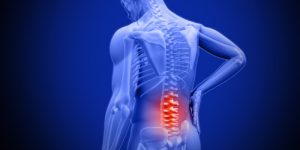Innovative Therapies for Moderate to Severe Pain Relief
Introduction
As medical science advances, innovative therapies for managing moderate to severe pain have emerged, offering new hope for those suffering from chronic and debilitating conditions. This article explores cutting-edge treatments that are revolutionizing pain management and improving the quality of life for patients.
Non-Pharmacological Therapies
1. Transcutaneous Electrical Nerve Stimulation (TENS)
TENS therapy involves using a device that sends low-voltage electrical currents through the skin to stimulate nerves and reduce pain.
- Mechanism: Electrical impulses disrupt pain signals and promote the release of endorphins, the body’s natural painkillers.
- Application: Electrodes are placed on the skin near the painful area, and the device is used several times a day for optimal results.
- Benefits: Non-invasive, portable, and can be used alongside other pain management strategies.
2. Cryotherapy
Cryotherapy involves exposing the body to extremely cold temperatures for a short period to reduce inflammation and pain.
- Mechanism: Cold exposure constricts blood vessels, reducing inflammation and numbing nerve endings.
- Application: Whole-body cryotherapy involves standing in a cryogenic chamber for 2-4 minutes, while localized cryotherapy targets specific areas.
- Benefits: Quick sessions, minimal side effects, and potential improvement in overall well-being.
3. Low-Level Laser Therapy (LLLT)
LLLT uses low-level lasers or light-emitting diodes (LEDs) to reduce pain and promote healing.
- Mechanism: Light energy penetrates the skin, enhancing cellular repair and reducing inflammation.
- Application: A handheld device is used to direct light at the painful area for several minutes.
- Benefits: Non-invasive, painless, and suitable for various types of pain, including musculoskeletal and neuropathic pain.
Minimally Invasive Procedures
1. Radiofrequency Ablation (RFA)
RFA involves using heat generated by radio waves to destroy nerve fibers carrying pain signals.
- Mechanism: Heat is applied through a needle to targeted nerves, disrupting their ability to transmit pain.
- Application: Performed under local anesthesia, with relief lasting from six months to a year.
- Benefits: Minimally invasive, relatively quick recovery, and effective for chronic pain conditions like arthritis and back pain.
2. Spinal Cord Stimulation (SCS)
SCS involves implanting a device that sends electrical pulses to the spinal cord to block pain signals.
- Mechanism: Electrical pulses interrupt pain signals before they reach the brain.
- Application: A trial period with an external device is followed by permanent implantation if successful.
- Benefits: Significant pain reduction, adjustable settings, and reversible if ineffective.
3. Platelet-Rich Plasma (PRP) Therapy
PRP therapy uses a concentrated solution of platelets from the patient’s blood to promote healing and reduce pain.
- Mechanism: Growth factors in platelets stimulate tissue repair and reduce inflammation.
- Application: Blood is drawn, processed to concentrate platelets, and injected into the painful area.
- Benefits: Uses the body’s natural healing processes, minimal side effects, and effective for joint and tendon pain.
Biological Therapies
1. Stem Cell Therapy
Stem cell therapy involves using stem cells to repair damaged tissues and reduce pain.
- Mechanism: Stem cells differentiate into various cell types, promoting regeneration and healing.
- Application: Stem cells are harvested from the patient’s bone marrow or fat tissue and injected into the painful area.
- Benefits: Potential for long-term pain relief, tissue regeneration, and reduced inflammation.
2. Gene Therapy
Gene therapy aims to modify or replace faulty genes to treat chronic pain conditions.
- Mechanism: Genetic material is delivered to cells to correct or alter pain pathways.
- Application: Techniques include viral vectors, nanoparticles, and CRISPR-Cas9 to target specific genes.
- Benefits: Potential for precise, long-lasting pain relief and addressing the root cause of pain.
3. Monoclonal Antibodies
Monoclonal antibodies are lab-engineered molecules that target specific proteins involved in pain and inflammation.
- Mechanism: Bind to and neutralize pain-related proteins, reducing pain and inflammation.
- Application: Administered via injection or infusion, often for conditions like rheumatoid arthritis and chronic migraines.
- Benefits: Targeted approach, effective for specific pain conditions, and fewer systemic side effects.
Integrative and Complementary Therapies
1. Acupuncture
Acupuncture involves inserting thin needles into specific points on the body to relieve pain.
- Mechanism: Stimulates nerves, muscles, and connective tissue, promoting natural pain relief and healing.
- Application: Typically involves weekly sessions, with the number of treatments depending on the condition.
- Benefits: Non-pharmacological, minimal side effects, and effective for various pain conditions.
2. Biofeedback
Biofeedback helps patients learn to control physiological functions to reduce pain.
- Mechanism: Uses sensors to monitor bodily functions like heart rate and muscle tension, teaching patients to regulate these processes.
- Application: Sessions with a trained therapist using biofeedback devices.
- Benefits: Non-invasive, enhances self-awareness, and effective for chronic pain management.
3. Mind-Body Therapies
Mind-body therapies include techniques like meditation, yoga, and Tai Chi to manage pain.
- Mechanism: Reduce stress, enhance relaxation, and improve pain perception.
- Application: Regular practice of mind-body techniques tailored to individual needs.
- Benefits: Holistic approach, minimal side effects, and improvement in overall well-being.
Conclusion
Innovative therapies for moderate to severe pain relief are transforming pain management, offering new hope and improved quality of life for patients. From advanced medical procedures to integrative and complementary approaches, these therapies provide diverse options to effectively manage and alleviate pain.



